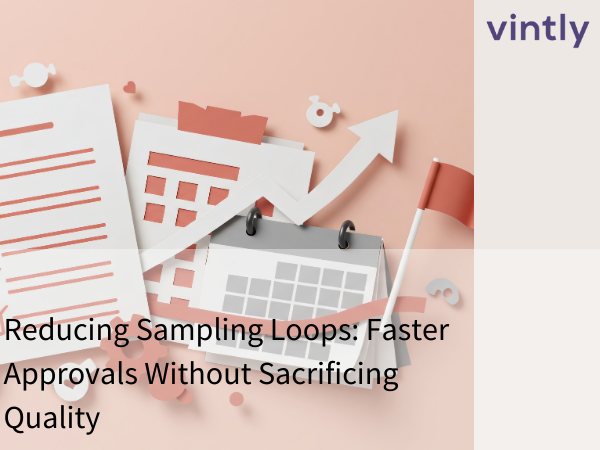Supply chain management software (SCM software) is a software or set of software designed to manage and coordinate the supply chain milestones of an organisation. It is used to manage the processes related to the flow of materials, data, information, and financial transactions from the supplier to the customer in a timely manner.
In this article, we will guide you through different types of softwares available, as well as highlight the risks of not going digital with your supply chain management.
Purpose of Supply Chain Management Software
The main purpose of SCM software is to improve visibility and control of the supply chain, enabling efficient communication and collaboration among suppliers, customers, and other stakeholders. It helps to identify opportunities for cost savings and simplifying the process while maximising customer service. This enables organisations to more accurately forecast demand, improve purchasing decisions, and build better supply relationships.
Overview of Supply Chain Management Software
SCM software helps organisations automate their logistics processes and oversee the entire supply chain. It provides information analytics on the supply chain, enabling organisations to understand customers’ needs, track inventory levels, and control costs. SCM software can also monitor supplier performance and produce reports to help understand and improve operational performance.
Types of Supply Chain Management Software
There are several types of SCM software available, and organisations don’t necessarily have to have just one; many companies choose to have a combination of ERP, WMS and POMS to manage all of their complex activities, as each responds to various specific needs. Below are a few common types of software:
- Warehouse Management Software (WMS): A type of software used to help organize and manage warehouse functions and operations, such as receiving, storing, and shipping. WMS also automates inventory control, material handling, and other associated processes.
- Enterprise Order Management Software (EOMS): A type of software used to manage customer orders and customer service from start to finish. It provides visibility into past, present, and future orders and provides forecasts to help anticipate customer needs.
- Inventory Management Software (IMS): A type of software used to manage inventory and stock levels for a variety of products. It provides real-time visibility into inventory levels, helps optimize stock levels, and reduce costs associated with overstocking and stock outs.
- Enterprise Resource Planning (ERP): refers to a type of software that organisations use to manage transactions, such as incoming and outgoing orders, but reaches many parts of the organisation aside from supply chain such as finance, or accounting to name a few.
- Purchase Order management system (POMS): A system that allows you to track and collaborate with your suppliers on one platform regarding activities such as, articles, prices, supplier management, purchase orders and shipments.
Benefits of Using Supply Chain Management Software
85 percent of supply chain executives struggled with inefficient digital technologies in their supply chains, according to a survey conducted by McKinsey. Using SCM software can minimize those struggles and offers a number of advantages to organisations, including improved productivity, reduced costs, and increased visibility.
- Improved Productivity: SCM software helps streamline operations and improve productivity by automating manual processes and speeding up order fulfillment. It increases accuracy and eliminates errors associated with manual processes, reducing the time and cost associated with the supply chain.
- Reduced Costs: SCM software helps to eliminate waste and optimize inventory levels, resulting in cost savings for organisations. It also helps to identify potential efficiencies that can reduce costs associated with the supply chain.
- Increased Visibility: SCM software provides organisations with real-time visibility into the supply chain, enabling them to better understand and manage their inventory levels, customer needs, and supplier performance.
- Challenges of Implementing Supply Chain Management Software
Challenges with Supply Chain Management Softwares
While SCM software can offer significant benefits to organisations, there are also challenges associated with implementing it. Some of the main challenges include ensuring accuracy, integrating with existing system infrastructure, and maximizing efficiency.
- Ensuring Accuracy: Ensuring accuracy and reliability of data is essential when implementing SCM software, as inaccurate data can lead to incorrect decisions and disruptions in the supply chain. Organisations must ensure that data is continually updated and accurate, and must review and test systems regularly.
- Integrating With Existing Systems: Integrating SCM software with existing systems can be a challenge. Organisations must ensure that their existing systems are able to communicate and share data with the new software, and that there are no interoperability issues.
- Maximizing Efficiency: Organisations must ensure they maximize the efficiency of their operations when implementing SCM software. This involves ensuring that the software is properly configured to meet the needs of the organisation, that processes are streamlined and optimized, and that the system is constantly updated and monitored.
To conclude
A supply chain management software is a valuable tool for organisations looking to improve visibility and control of their supply chain. It can provide numerous benefits, including improved productivity, reduced costs, and increased visibility. However, there are also challenges associated with implementing SCM software, such as ensuring accuracy, integrating with existing systems, and maximizing efficiency.
At Vintly, we focus on purchase order management and on enabling you to collaborate with your suppliers throughout the entire purchasing cycle: from article management to physical delivery. Your suppliers are active on the platform, enabling you both to be up to date on your tasks and deadlines, as well as in line in terms of deviations, progress and delays.
If you'd like to know more about what we can do for you, don't hesitate to reach out.
.png)


